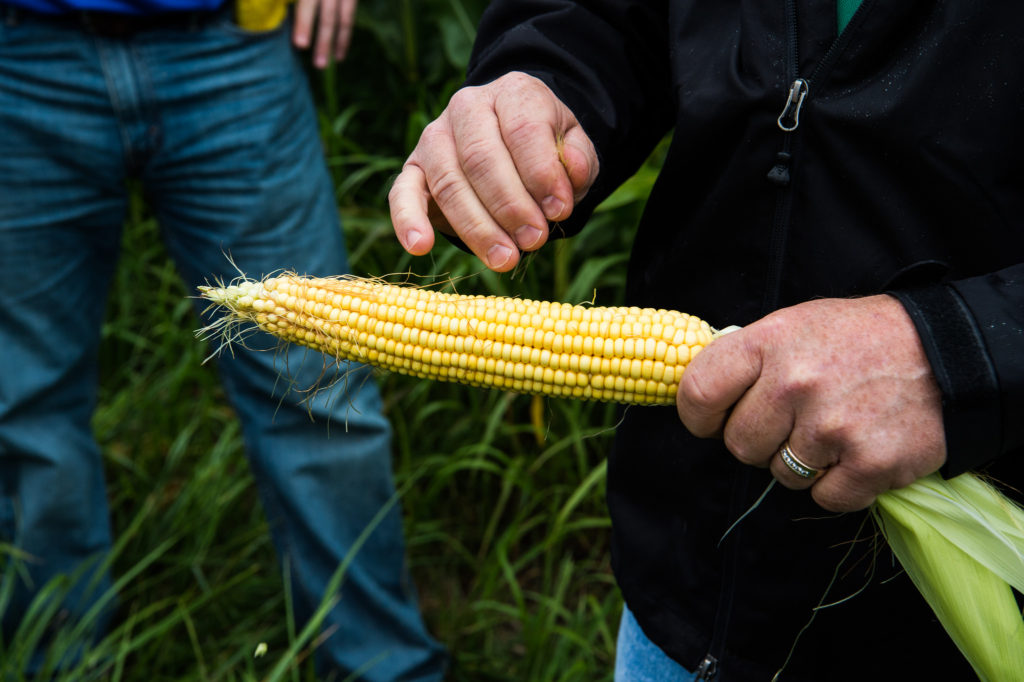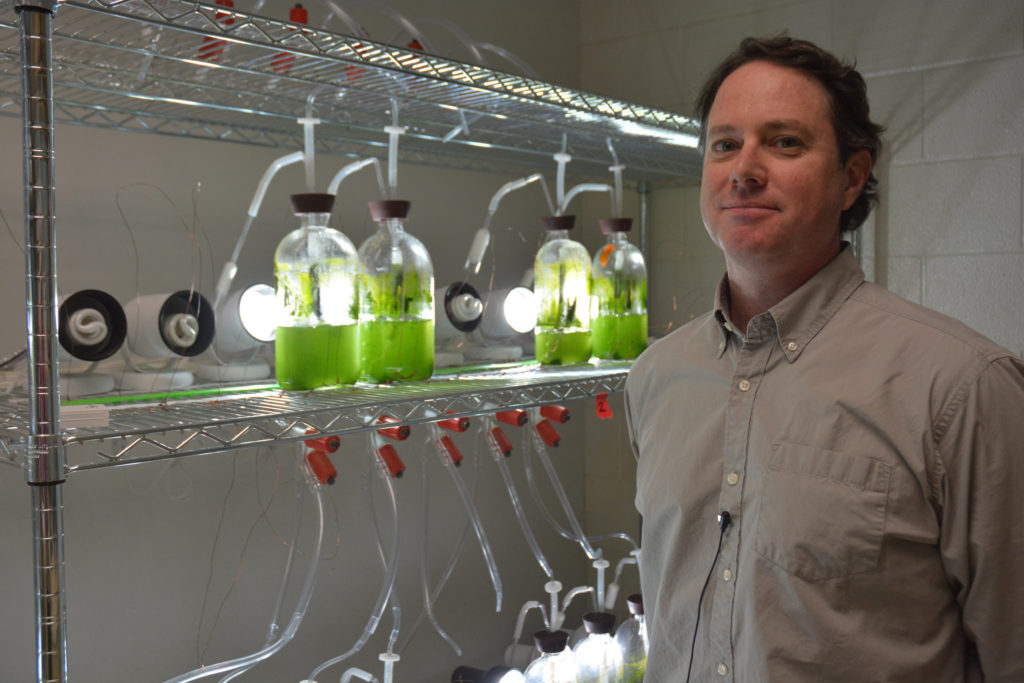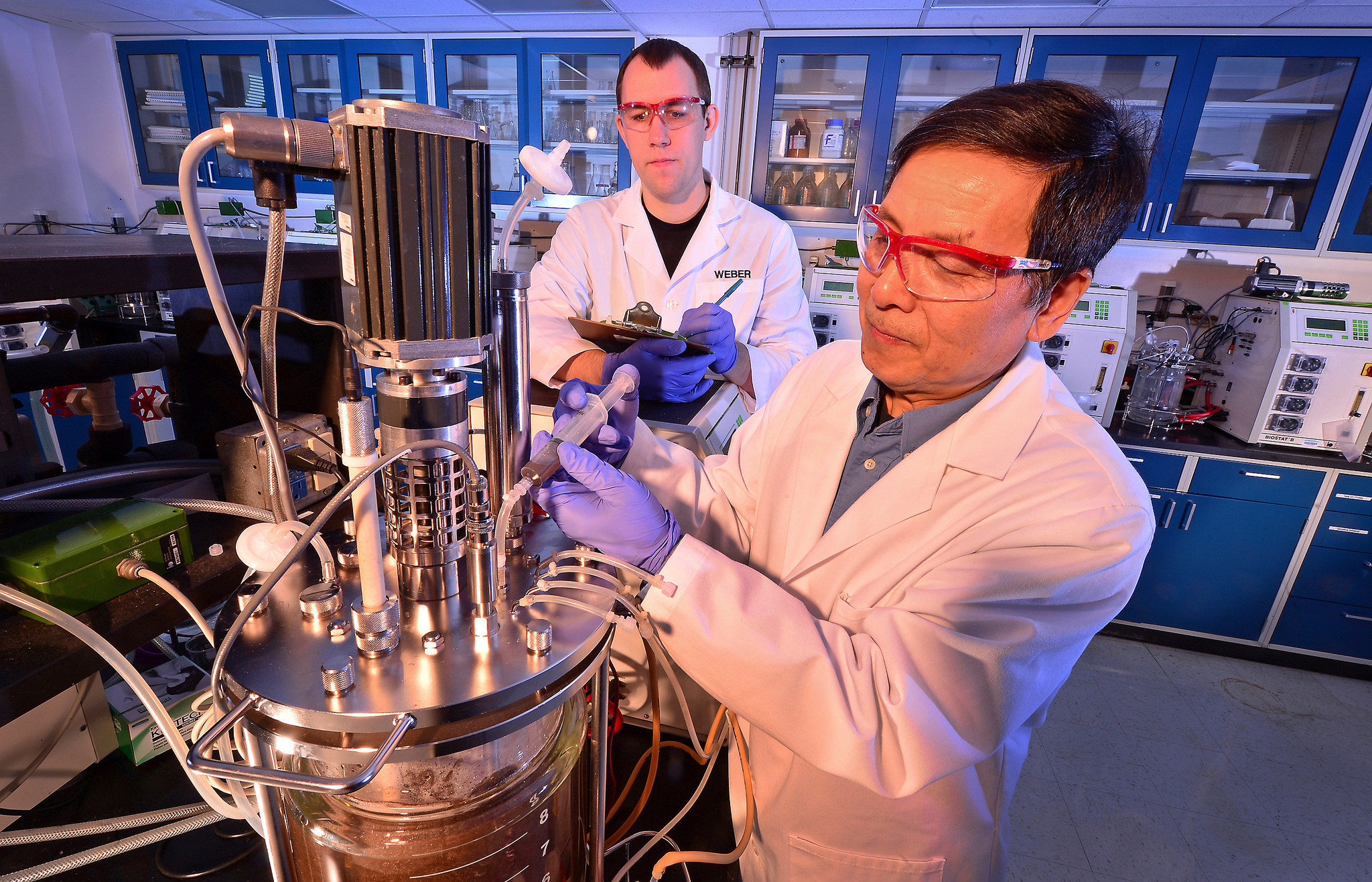With climate change and other environmental challenges looming large, will developing organic biofuels help reduce transportation emissions?
Approximately 29 percent of the energy the US consumes is for transportation, and about 92 percent of US transportation is fueled by petroleum products. As a result, transportation is the sector that produces the most greenhouse gas emissions in the US.
With the threat of climate change and other environmental challenges looming, we need to find a way to reduce emissions from the transportation sector. Biofuels are one potential solution.
What Are Biofuels?
Biofuel is fuel made from organic matter known as biomass. The process of developing biofuels involves this organic matter and includes substances such as plant matter, fungi, algae, and animal waste. Various processes exist for making biofuels, but they typically involve using chemical reactions, heat, and fermentation to break down molecules in the organic matter. The resulting products can then be refined to create a fuel that can be used for transportation.
Biofuel is a renewable resource because it can be replenished quickly, unlike fossil fuels. Many biofuels release fewer emissions than fossil fuels, but not all biofuels are necessarily low emission.

Current Biofuels Uses
The earliest automobiles were fueled by biofuels, but petroleum products overtook them after the discovery of cheap oil reserves. Today, most of the gasoline used for cars in the US is blended with ethanol, a type of biofuel. Some cars can also run on just ethanol. The use of biofuels for transportation is more common in Europe where palm oil, a diesel-like biofuel, is widely available.
Other transportation industries, such as aviation, are also starting to explore the use of biofuels. In 2016, United Airlines started using biofuels for regularly scheduled flights, becoming the first airline to do so. United is also partnering with a company called Fulcrum BioEnergy that produces biofuel using waste and household trash. The aviation industry produces 12 percent of CO2 emissions, so switching to cleaner-burning biofuels could have a substantial impact on the health of our environment.
Developing Biofuels and Emissions
So, how do biofuels and petroleum products compare when it comes to emissions?
One study that compared diesel with a soy-based biodiesel alternative found that the soy-based fuel produced 93 percent more energy and reduced greenhouse gas emissions by 41 percent. Evaluating the burning of biofuels versus fossil fuels often shows similar results.
When looking at the wider picture though, it gets a bit more complicated. When developing biofuels, scientists have to consider other environmental impacts too, namely those involved in growing the crops, including the use of land and inputs such as fertilizers, pesticides, water, and fuel used to power the processing and transportation of biofuel products.
A paper published in the journal Atmospheric Chemistry and Physics, for instance, argues that agricultural activities related to biodiesel increase N2O emissions. N2O has a stronger warming potential than CO2, and the increased N2O emissions may offset the reduced CO2.
Understanding the full picture of biodiesel and emissions requires looking at all stages of the product’s life, a process called life cycle analysis. When the US Department of Energy’s Argonne National Laboratory performed such an analysis, they found that emissions from biodiesel were 74 percent lower than emissions from petroleum diesel.
However, the World Resources Institute has calculated that providing 10 percent of the liquid transportation fuel we will use in 2050 would require about 30 percent of the energy present in our annual production of crops. This suggests that it might not be realistic to use biofuels for all of our transportation needs.
The Royal Academy of Engineering in the UK has recommended that, to get around these challenges, we should use more waste to produce biofuels, rather than growing crops to use as fuels.
The Future of Developing Biofuels

Biofuel use is growing, but it still makes up a relatively small part of fuel used for transportation. The global biofuels market was worth $168 billion in 2016 and is forecasted to grow to $218.7 billion in 2022.
In the future, we’ll likely see new forms of biofuel in use. Today, we mostly use what’s called first-generation biofuels, which are made from sugars, oils, starches, or animal fats. These fuels include ethanol, biodiesel, and methane. Researchers and businesses are now starting to explore more second-generation biofuels, which come from non-food crops, such as switchgrass, willow, and wood chips, as well as agricultural waste. These fuels contain more cellulose, the substance that makes up plant cell walls, which could produce biofuels that are more efficient and cleaner burning than those we use today.
Further into the future, we may start using third-generation biofuels, which are those produced using algae. Fourth-generation biofuels come from plants or other biomass materials that are engineered specifically to have higher energy yields, lower emissions, and other advantages.
Biofuels may not be the cure-all for our transportation emissions problem, but they will likely play an important role in addressing the issue in the years to come. From petroleum to corn to algae, the way we power our transportation is changing.
Featured image: U.S. Department of Agriculture (USDA) Agricultural Research Service (ARS) Molecular biologist Z. Lewis Liu (foreground) and technician Scott Weber add a new yeast strain to a corncob mix to test the yeast’s effectiveness in fermenting ethanol from plant sugars. The yeast naturally produces an enzyme that releases and degrades sugars from biomass, which could help reduce ethanol production costs. Photo by USDA via Flickr.
References
Energy Use for Transportation. (2018, May 23). Retrieved January 6, 2019, from https://www.eia.gov/energyexplained/?page=us_energy_transportation
Sources of Greenhouse Gas Emissions. (2018, October 09). Retrieved January 6, 2019, from https://www.epa.gov/ghgemissions/sources-greenhouse-gas-emissions
Sustainable fuel sources. (n.d.). Retrieved January 6, 2019, from https://www.united.com/ual/en/us/fly/company/global-citizenship/environment/sustainable-fuel-sources.html
Bretz, L. (2015, August 10). Renewable Future – Biofuel Energy. Retrieved January 6, 2019, from https://blog.shipleyenergy.com/biofuel-energy-the-renewable-future
Hill, J., Nelson, E., Tilman, D., Polasky, S., & Tiffany, D. (2006). Environmental, economic, and energetic costs and benefits of biodiesel and ethanol biofuels. Proceedings of the National Academy of Sciences, 103(30), 11206-11210. doi:10.1073/pnas.0604600103
Crutzen, P. J., Mosier, A. R., Smith, K. A., & Winiwarter, W. (2008). N2O release from agro-biofuel production negates global warming reduction by replacing fossil fuels. Atmospheric Chemistry and Physics, 8(2), 389-395. doi:10.5194/acp-8-389-2008
Steer, A. (2015, January 29). Biofuels Are Not a Green Alternative to Fossil Fuels. Retrieved January 6, 2019, from https://www.wri.org/blog/2015/01/biofuels-are-not-green-alternative-fossil-fuels
Biodiesel Vehicle Emissions. (n.d.). Retrieved January 6, 2019, from https://afdc.energy.gov/vehicles/diesels_emissions.html
Carrington, D. (2017, July 13). Biofuels needed but some more polluting than fossil fuels, report warns. Retrieved January 6, 2019, from https://www.theguardian.com/environment/2017/jul/14/biofuels-need-to-be-improved-for-battle-against-climate-change
Biofuels Market Size Will Reach USD 218.7 Billion by 2022, Globally: Zion Market Research. (2018, January 09). Retrieved January 6, 2019, from https://globenewswire.com/news-release/2018/01/09/1285912/0/en/Biofuels-Market-Size-Will-Reach-USD-218-7-Billion-by-2022-Globally-Zion-Market-Research.html
Biofuels: The Benefits and Drawbacks. (2017, February 27). Retrieved January 6, 2019, from https://www.nationalgeographic.com/environment/global-warming/biofuel/




